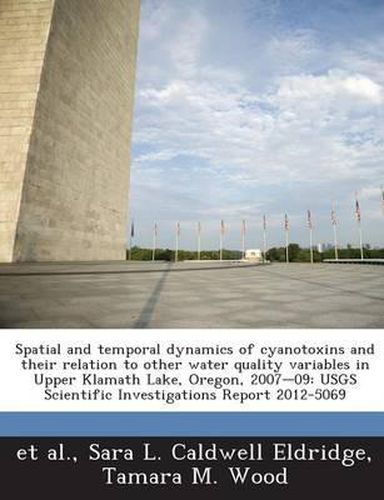Readings Newsletter
Become a Readings Member to make your shopping experience even easier.
Sign in or sign up for free!
You’re not far away from qualifying for FREE standard shipping within Australia
You’ve qualified for FREE standard shipping within Australia
The cart is loading…






Phytoplankton blooms dominated by cyanobacteria that occur annually in hypereutrophic Upper Klamath Lake, Oregon, produce microcystins at concentrations that may contribute to the decline in populations of endangered Lost River (Deltistes luxatus) and shortnose (Chasmistes brevirostris) suckers. During 2007-09, water samples were collected from Upper Klamath Lake to determine the presence and concentrations of microcystins and cylindrospermopsins and to relate the spatial and temporal occurrences of microcystins to water quality and other environmental variables. Samples were analyzed for intracellular (particulate) and extracellular (dissolved) microcystins and cylindrospermopsins using enzyme-linked immunosorbent assays (ELISA). Samples contained the highest and most variable concentrations of microcystins in 2009, the year in which an earlier and heavier Aphanizomenon flos-aquae-dominated phytoplankton bloom occurred. Concentrations were lowest in 2008 when the bloom was lighter, overall, and delayed by nearly 1 month. Microcystins occurred primarily in dissolved and large (> 63 m) particulate forms in all years of the study, and overall, concentrations were highest at MDT (the deepest site in the study) and HDB, although HDB was sampled only in 2007 and MDT was not sampled in 2008. Comparisons among daily median total microcystin concentrations; chlorophyll a concentrations; total, dissolved, and particulate nutrient concentrations; and nutrient ratios measured in 2009 and between 2007 and 2009 indicate that microcystin concentrations generally increase following the decline of the first A. flos-aquae-dominated bloom of each season in response to an increase in bioavailable nitrogen and phosphorus. Nitrogen fixation by A. flos-aquae early in the sample season appears to provide new nitrogen for growth of toxigenic Microcystis aeruginosa, whereas, later in the season, these species appear to co-exist. Understanding the ecological interactions between these species may be important for predicting periods of elevated cyanotoxin concentrations and has important implications for management of this lake.
$9.00 standard shipping within Australia
FREE standard shipping within Australia for orders over $100.00
Express & International shipping calculated at checkout
Phytoplankton blooms dominated by cyanobacteria that occur annually in hypereutrophic Upper Klamath Lake, Oregon, produce microcystins at concentrations that may contribute to the decline in populations of endangered Lost River (Deltistes luxatus) and shortnose (Chasmistes brevirostris) suckers. During 2007-09, water samples were collected from Upper Klamath Lake to determine the presence and concentrations of microcystins and cylindrospermopsins and to relate the spatial and temporal occurrences of microcystins to water quality and other environmental variables. Samples were analyzed for intracellular (particulate) and extracellular (dissolved) microcystins and cylindrospermopsins using enzyme-linked immunosorbent assays (ELISA). Samples contained the highest and most variable concentrations of microcystins in 2009, the year in which an earlier and heavier Aphanizomenon flos-aquae-dominated phytoplankton bloom occurred. Concentrations were lowest in 2008 when the bloom was lighter, overall, and delayed by nearly 1 month. Microcystins occurred primarily in dissolved and large (> 63 m) particulate forms in all years of the study, and overall, concentrations were highest at MDT (the deepest site in the study) and HDB, although HDB was sampled only in 2007 and MDT was not sampled in 2008. Comparisons among daily median total microcystin concentrations; chlorophyll a concentrations; total, dissolved, and particulate nutrient concentrations; and nutrient ratios measured in 2009 and between 2007 and 2009 indicate that microcystin concentrations generally increase following the decline of the first A. flos-aquae-dominated bloom of each season in response to an increase in bioavailable nitrogen and phosphorus. Nitrogen fixation by A. flos-aquae early in the sample season appears to provide new nitrogen for growth of toxigenic Microcystis aeruginosa, whereas, later in the season, these species appear to co-exist. Understanding the ecological interactions between these species may be important for predicting periods of elevated cyanotoxin concentrations and has important implications for management of this lake.